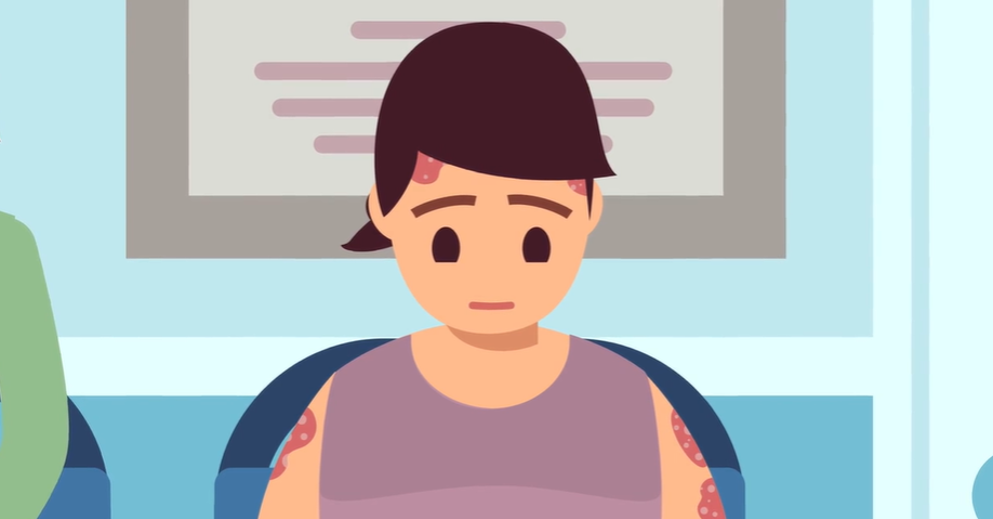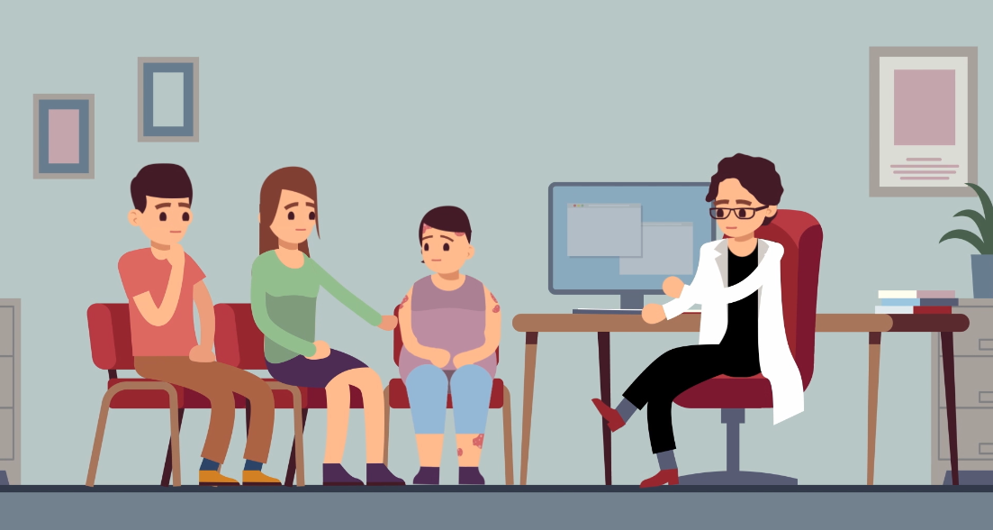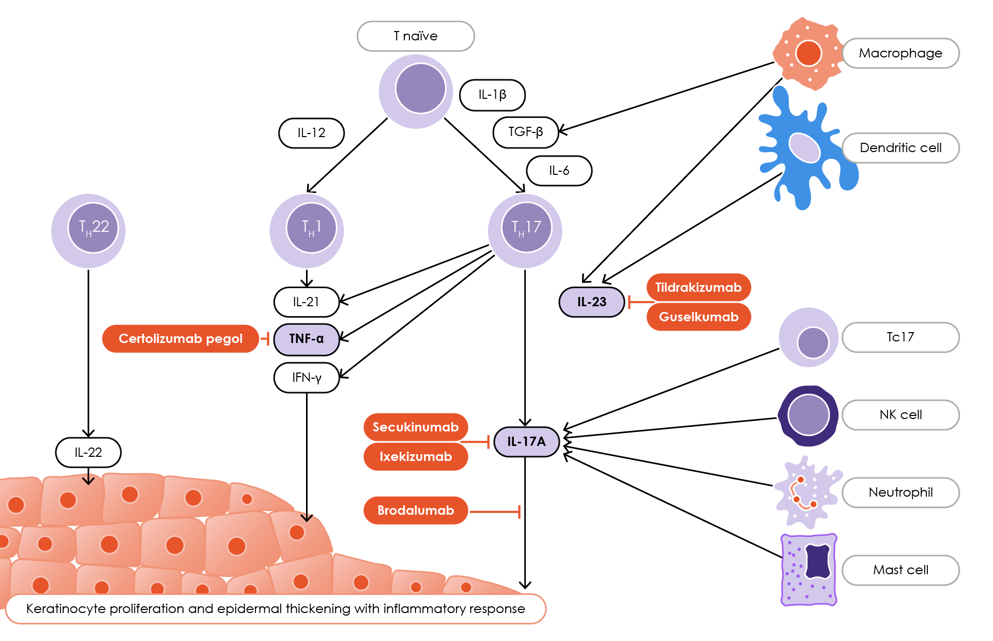
Welcome
Are you doing enough for your paediatric patients with moderate-to-severe psoriasis? The burden of psoriasis is greatest for our youngest patients, like Mia, but current treatment options are limited. Find out how that is set to change.
- Join Mia on her animated journey to appreciate how you can improve the lives of young people like her
- Hear Professor Vakirlis share his expertise and experience to realise the benefit of acting early when treating children
- Read B.A.D. recommendations for biologic therapies that could impact your clinical practice
- Take our interactive CME module to be confident your knowledge is comprehensive and up to date
Meet our young patient Mia who suffers from psoriasis and is currently being managed by our team of paediatric psoriasis experts. Together we will be exploring the burden of childhood psoriasis for patients and their families, particularly the difficulties around diagnosis, comorbidities and limited treatment options. Mia’s treatment history helps us describe the current treatments available and we also look to the future for Mia using a summary of the clinical trials of more targeted treatments underway.
The World Health Organization defines psoriasis as a painful, disfiguring and disabling disease for which there is no cure and with great negative impact on patients’ quality of life (QoL)1. Prevalence in adults is 2–3%, but up to 30% of patients present with their first symptoms during childhood and adolescence, a critical point in the development of emotional and psychosocial well-being2. While milder forms of psoriasis are typically managed with topical therapies, patients with moderate-to-severe psoriasis generally require systemic or biologic therapy for which there are currently limited options available2.
Short of time? View a short expert interview with Professor Tiago Torres which covers all the key topics relevant to childhood psoriasis.
Video corrections: (i) Adalimumab (4yr) FDA should read Adalimumab (4yr) EMA; (ii) Ixekizumab3 and secukinumab4 have now received European approval for the treatment of moderate-to-severe plaque psoriasis in children over the age of six years (September 2020)
Click on the list icon in the video player (bottom, right-hand side) to directly access the answer to the below questions.
- How prevalent is paediatric psoriasis in your region? (00:10 - 00:44)
- What treatments are available for treating children with mild-to-moderate psoriasis? (00:44 - 01:04)
- What treatments are available for treating children with moderate-to-severe psoriasis? (01:04 - 02:11)
- Are physicians reluctant to consider biologics as a treatment option for children? (02:11 - 02:40)
- Is long-term efficacy and safety data with biologics still lacking? (02:40 - 03:38)
- Evolving treatment landscape in adult psoriasis and paediatric psoriasis (03:38 - 04:29)
- Biologic therapies currently approved (04:29 - 04:57)
- Biologic therapies currently being evaluated in clinical trials for paediatric psoriasis (04:57 - 05:31)
- Will having well-controlled psoriasis in paediatric patients reduce the impact of psoriasis in later life? (05:31 - end).
EADV Virtual 2021
Explore the sessions from this EADV symposium from September 2021, addressing current issues faced when treating paediatric psoriasis.
EACCME® accredited module in paediatric psoriasis
Everything you need to consider when treating paediatric psoriasis
What’s wrong with Mia?
Discover the burden of psoriasis for Mia and her family
Mia's treatment
Find out the limitations of available treatment options
Is the future clear?
Find out about the trials ongoing in paediatric patients
of interest
are looking at
saved
next event
This content has been developed independently by Medthority who previously received educational funding in order to help provide its healthcare professional members with access to the highest quality medical and scientific information, education and associated relevant content.
References
- World Health Organization. Psoriasis. 2016. Available at: https://www.who.int/publications-detail/global-report-on-psoriasis. Accessed 27 April 2020.
- Paller AS, Singh R, Cloutier M, Gauthier-Loiselle M, Emond B, Guérin A, et al. Prevalence of psoriasis in children and adolescents in the United States: A claims-based analysis. J Drugs Dermatology. 2018;17(2):187–194.
- Taltz 80 mg solution for injection in pre-filled syringe - Summary of Product Characteristics (SmPC). Available at: https://www.medicines.org.uk/emc/product/7233/smpc. Accessed 13 January 2021.
- Cosentyx 150 mg solution for injection in pre-filled pen - Summary of Product Characteristics (SmPC) Avai. https://www.medicines.org.uk/emc/product/3669/smpc. Accessed 13 January 2021.




